Tswana Traditional Attire: From Traditional Ceremonies to Everyday Wear
Tswana Traditional Attire: From Traditional Ceremonies to Everyday Wear
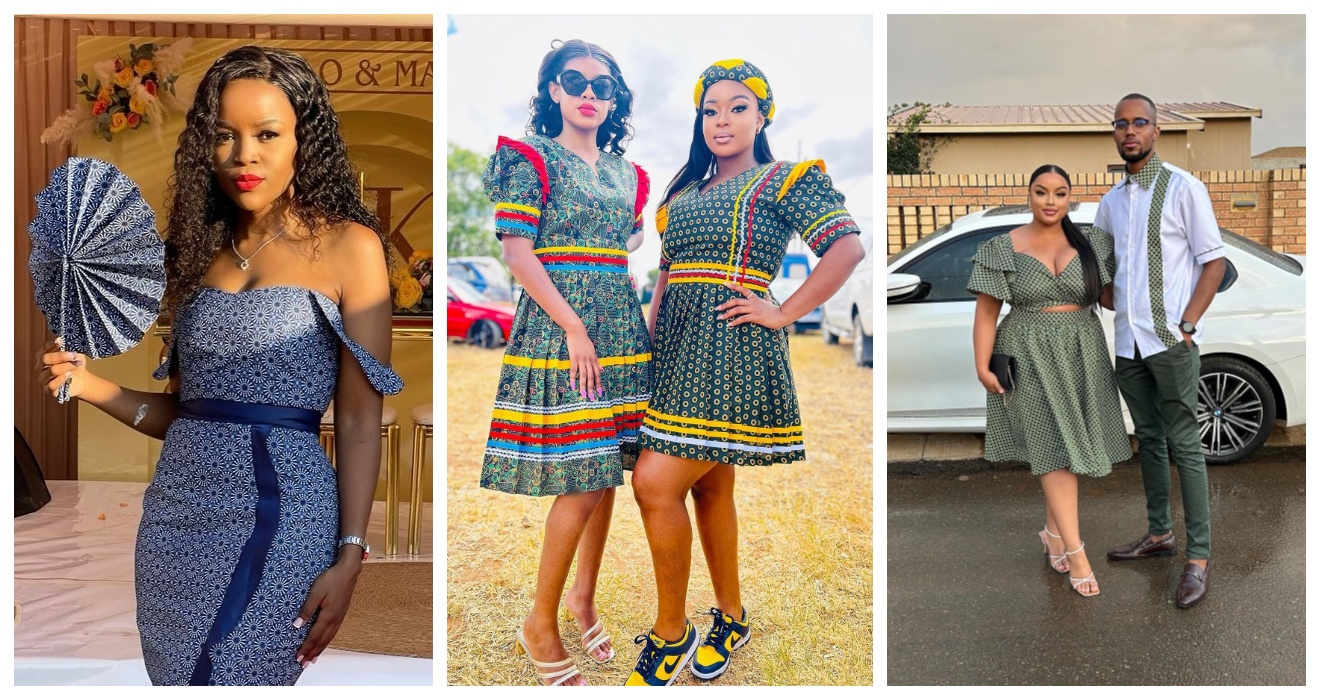
Introduction
Tswana traditional attire holds a significant place in the culture and heritage of the Tswana people in Southern Africa. From traditional ceremonies to everyday wear, it represents the essence of their identity and serves as a symbol of pride and belonging. In this article, we will explore the overview of Tswana traditional attire, its evolution over the years, and the cultural significance it holds.



Overview of Tswana Traditional Attire
Tswana traditional attire is known for its vibrant colors, intricate patterns, and attention to detail. It consists of various garments that are worn by both men and women, reflecting the cultural values and customs of the Tswana community. Men typically wear a distinctive shirt called a “kofifi” and trousers known as “thoho”. Women, on the other hand, wear a traditional dress called a “moshate” or “leteisi”, which is often accompanied by a colorful sash or head wrap known as a “tsheke”. These garments are meticulously designed, incorporating beadwork, embroidery, and other traditional decorative elements.
Evolution of Tswana Traditional Attire
Over time, Tswana traditional attire has evolved to reflect contemporary fashion trends while maintaining its cultural significance. Today, we can observe a blend of traditional elements with modern influences in Tswana attire. Designers and artisans have embraced innovative techniques, fabric choices, and styles, resulting in a fusion of traditional and modern aesthetics. This evolution has allowed Tswana traditional attire to transcend beyond ceremonial occasions and become a part of everyday wear for many Tswana individuals. It serves as a means of cultural expression and identity in a rapidly changing world while preserving the rich history and traditions of the Tswana people.


Traditional Ceremonial Attire
Tswana traditional attire holds a significant place in the culture and heritage of the Tswana people in Southern Africa. From traditional ceremonies to everyday wear, it represents the essence of their identity and serves as a symbol of pride and belonging.
Bogwera: Attire for Male Initiation Ceremonies
One of the important traditional ceremonies among the Tswana community is the male initiation ceremony known as Bogwera. During this rite of passage, young boys transition into manhood and join the ranks of respected adults in their community. The attire worn during Bogwera is of utmost importance as it signifies their readiness for adulthood. Traditionally, boys wear a special garment called “moetsana” which consists of a colorful sleeveless top, skin cap, and beaded accessories. This attire reflects their cultural heritage and represents their transformation into responsible men.

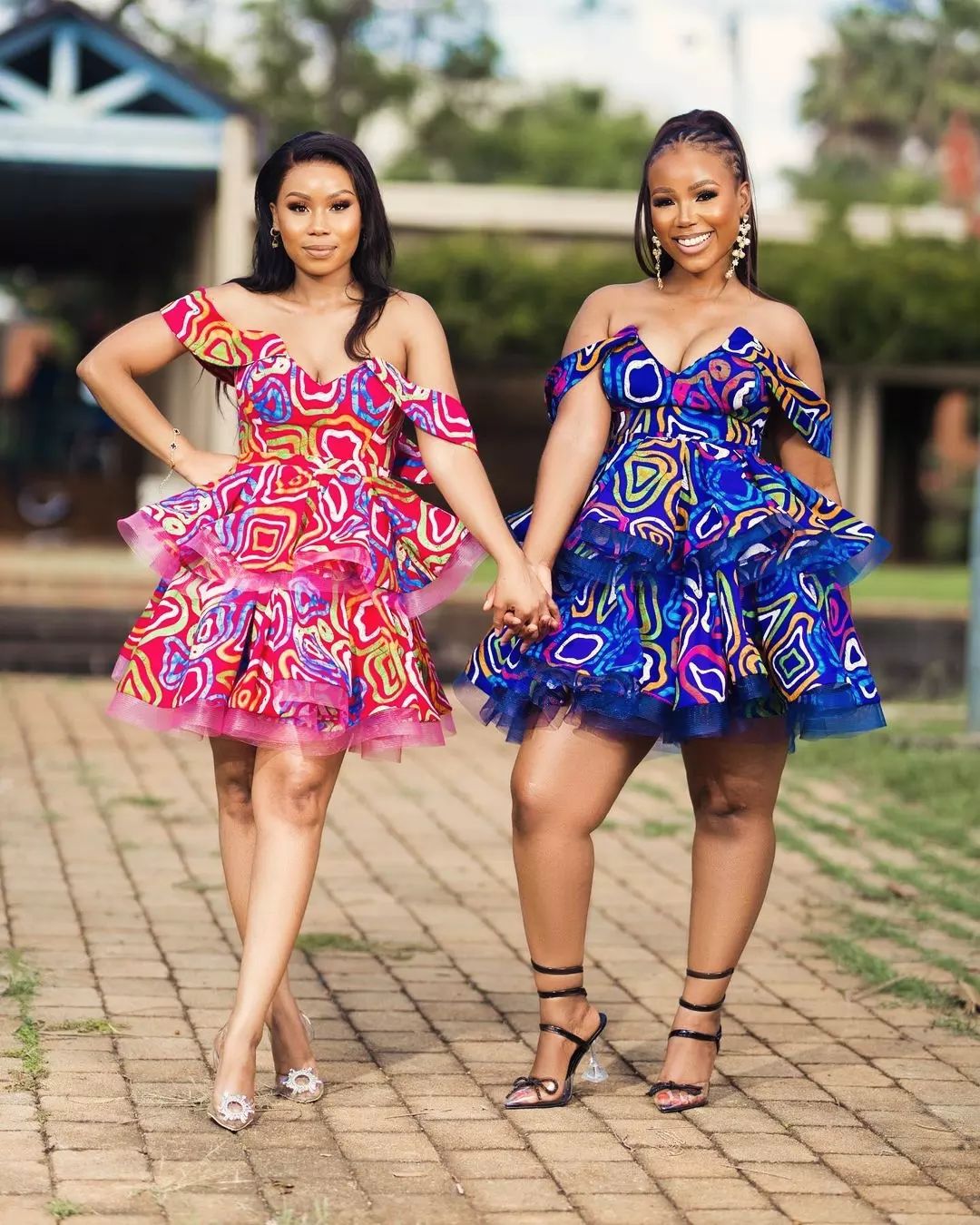
Setabane and Dikole: Attire for Female Initiation Ceremonies
Similar to the male initiation ceremonies, the Tswana community also has initiation ceremonies for young girls. These ceremonies celebrate the transition from childhood to womanhood and are marked by the wearing of special attire. Setabane is the traditional attire worn by girls during their initiation ceremony. It consists of a vibrant and intricately designed dress adorned with colorful beads and patterns. Additionally, Dikole, which are traditional skirts made from animal skin, are also worn during these ceremonies. These garments symbolize the girls’ readiness to take on adult responsibilities and signifies their coming of age.
Overall, Tswana traditional attire holds immense cultural significance, not only during traditional ceremonies but also as a part of everyday wear. It represents the Tswana people’s rich heritage and serves as a source of pride and identity in a rapidly changing world.
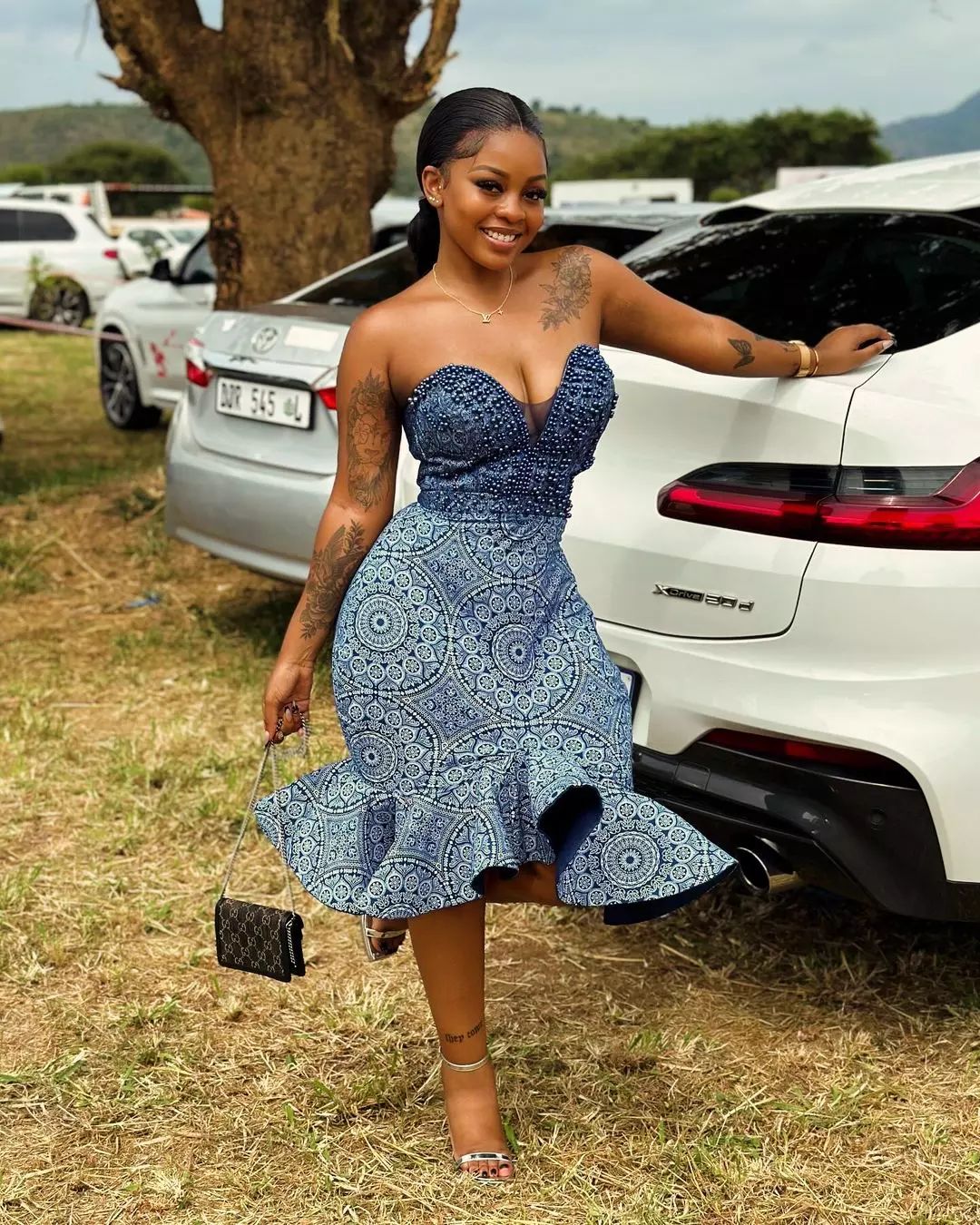

Wedding Attire
Tswana traditional attire is not only reserved for special ceremonies but also plays a significant role in wedding celebrations. The bride and groom have specific attire that reflects their cultural heritage and adds a touch of elegance to the occasion.
Bride’s Attire: Dinale and Mokorotlo
The bride’s attire is characterized by two main clothing pieces – the Dinale and Mokorotlo. The Dinale is a vibrant and intricately designed dress made from colorful fabric, usually adorned with beads and patterns that represent the Tswana culture. It is a symbol of grace and femininity, and the bride often pairs it with traditional accessories like necklaces, bracelets, and earrings. The Mokorotlo is a traditional hat made from woven grass or straw, shaped like a crown. It adds a regal touch to the bride’s overall look and completes her traditional ensemble.
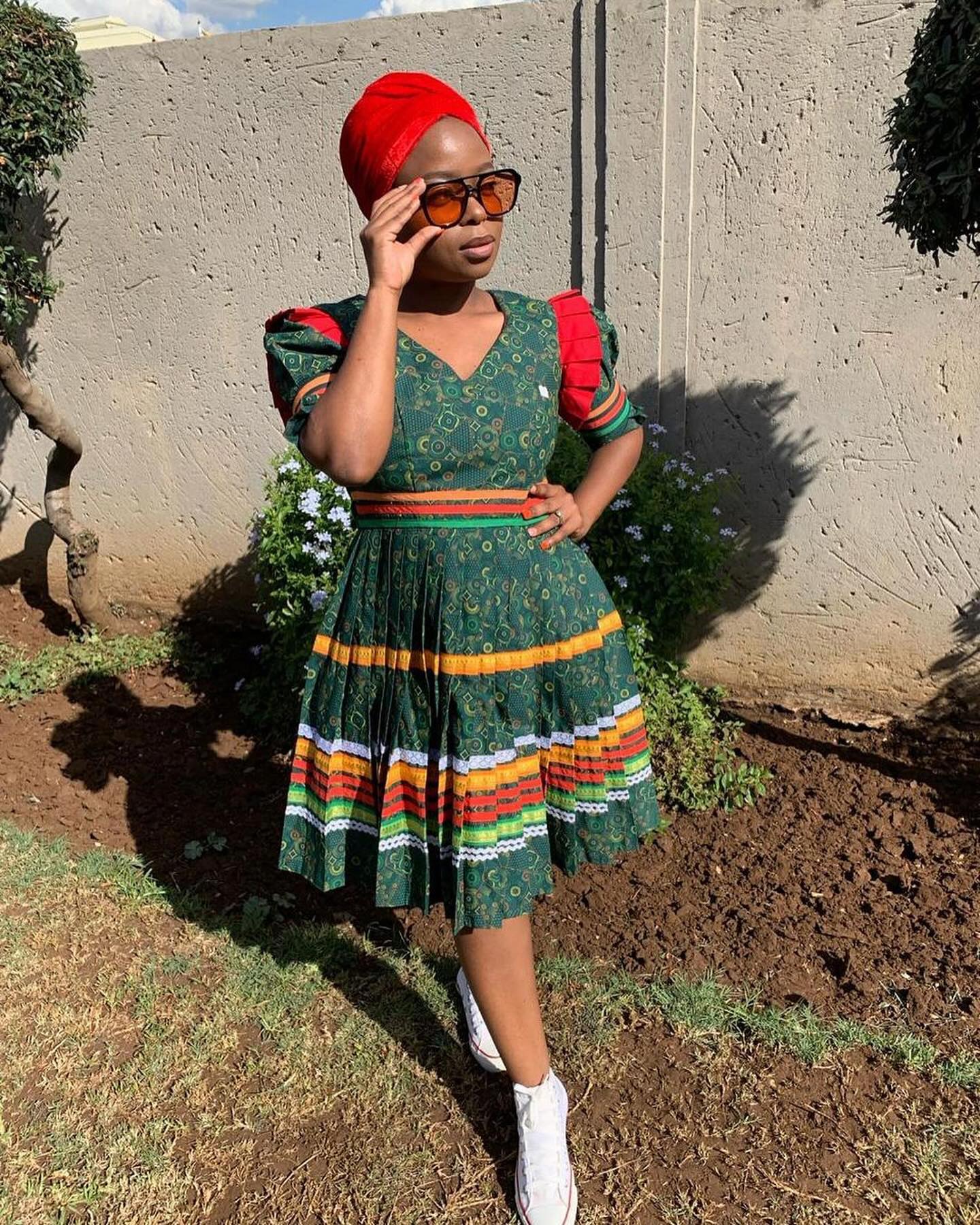
Groom’s Attire: Lebatlhanelo and Sefate
The groom’s attire consists of the Lebatlhanelo and Sefate. The Lebatlhanelo is a traditional shirt made from colorful fabric and often embroidered with intricate patterns. It is worn with matching pants and a sash around the waist. The Sefate, on the other hand, is a traditional hat made from woven straw or grass. It is shaped like a wide-brimmed hat and adds a touch of sophistication to the groom’s appearance.
Tswana wedding attire showcases the beauty and richness of the Tswana culture during these joyous occasions. The vibrant colors, intricate designs, and traditional accessories all contribute to creating a visually stunning and culturally significant celebration of love and unity.
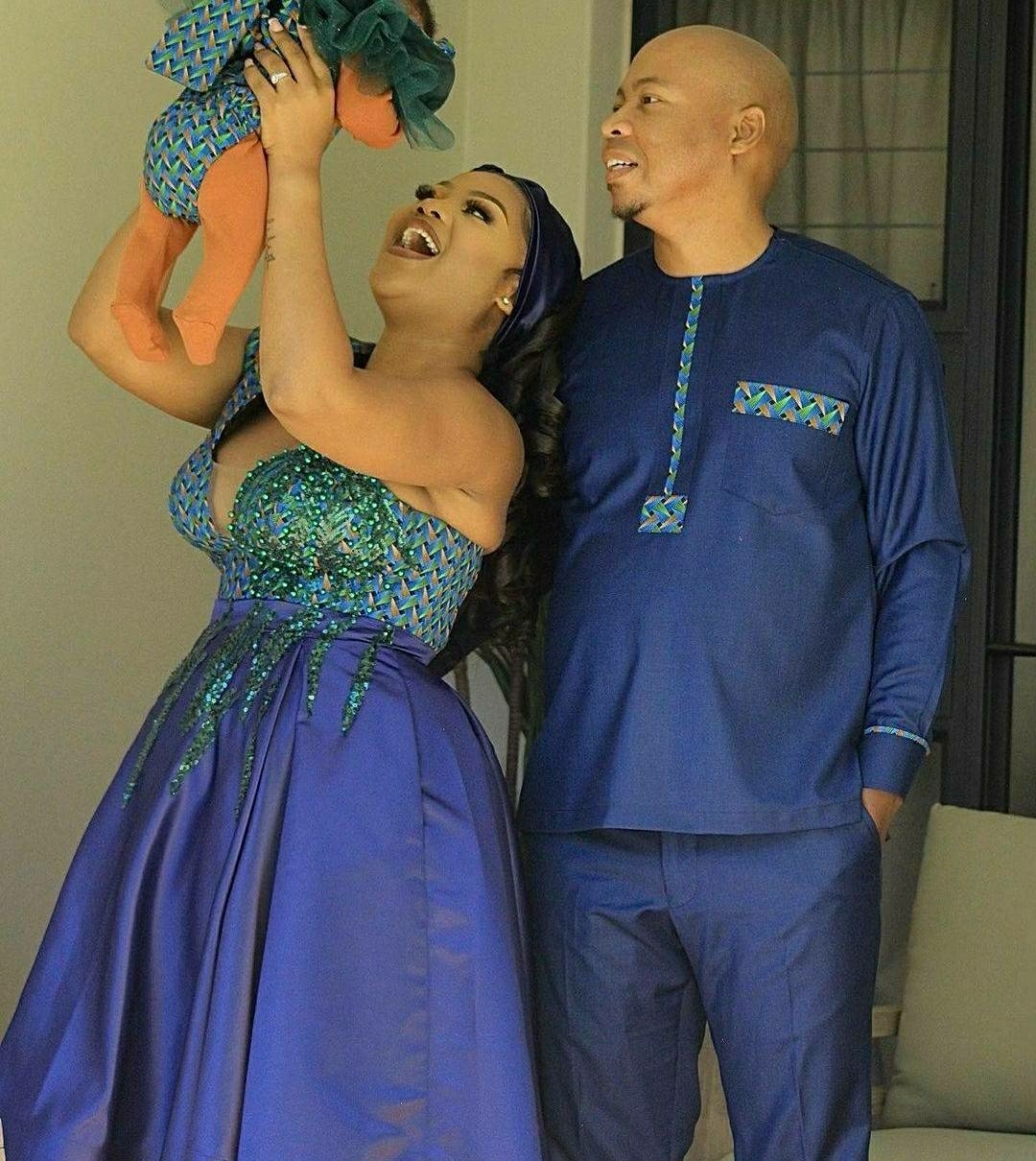
Everyday Wear
Tswana traditional attire is not only reserved for special ceremonies but also holds significance in everyday wear. The rich cultural heritage of the Tswana people is beautifully reflected in their traditional clothing, which showcases vibrant colors, intricate designs, and a sense of elegance. Here, we will explore the traditional attire worn by Tswana women and men in their day-to-day lives.
Women’s Traditional Attire: Mmele and Tsutsube
Tswana women often wear two main pieces of traditional clothing – the Mmele and Tsutsube. The Mmele is a beautiful dress made from colorful fabric and adorned with intricate embroidery. It is typically ankle-length and features long, voluminous sleeves. The Tsutsube is a traditional apron worn over the Mmele, adding an extra layer of elegance and cultural significance. The Tsutsube is often crafted with vibrant fabric and embellished with beads or patterns that highlight Tswana traditions.
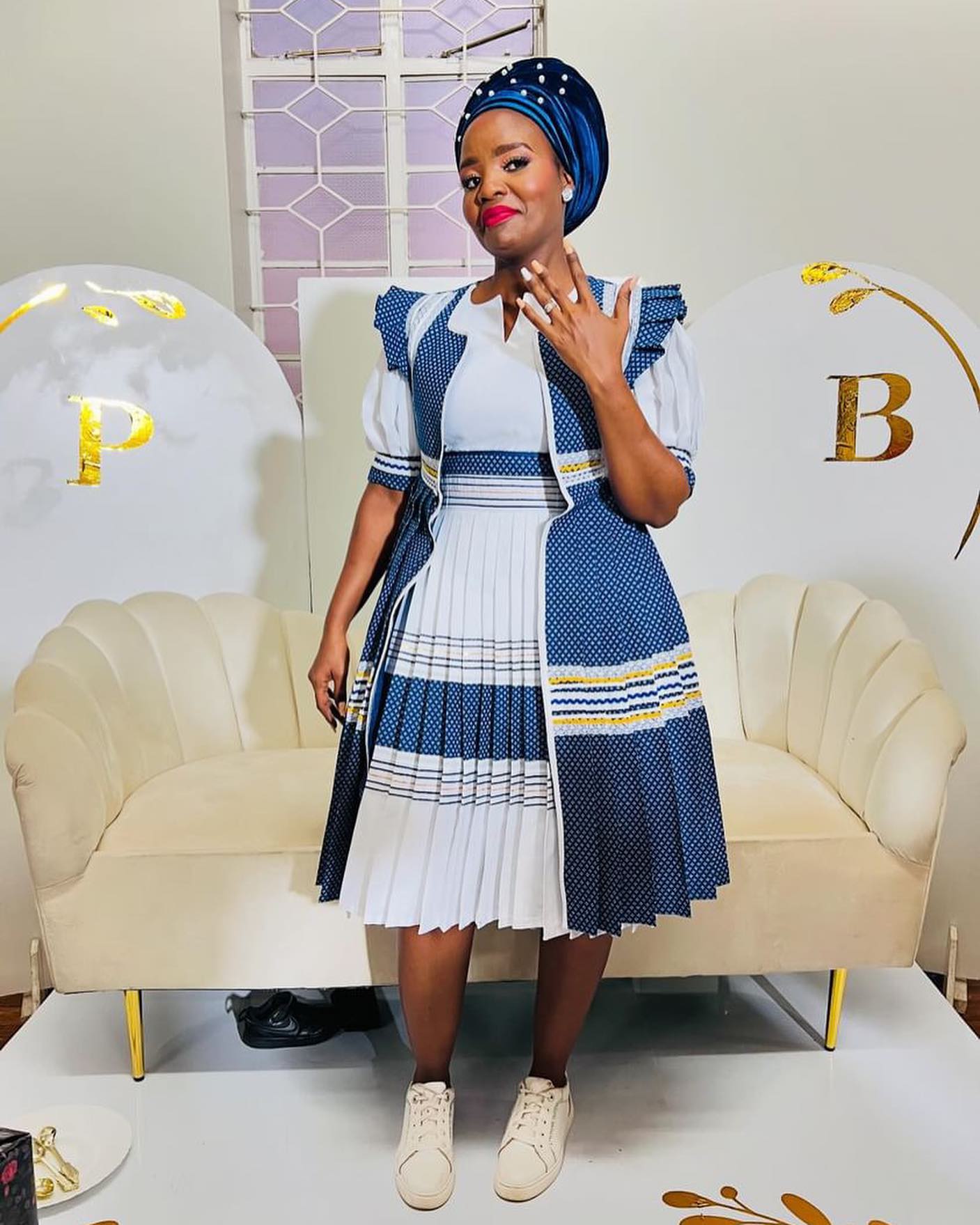
Men’s Traditional Attire: Bespoke and Kobo-kobo
For Tswana men, traditional attire includes the Bespoke and Kobo-kobo. The Bespoke is a tailored suit made from colorful fabric such as shweshwe or wax print. It is typically worn with a matching waistcoat and trousers, showcasing the Tswana culture’s love for vibrant hues and intricate patterns. The Kobo-kobo is a traditional wide-brimmed hat, often made from straw or grass. It adds a touch of sophistication and completes the traditional ensemble for Tswana men.
Tswana traditional attire is not only a representation of cultural pride and heritage but also a reflection of elegance and style. Whether worn on special occasions or in everyday life, it serves as a visual celebration of the rich traditions and values of the Tswana people.
Modern Influence on Tswana Traditional Attire
Trends and Modern Elements in Tswana Attire
Tswana traditional attire has evolved over the years, incorporating modern elements and trends while still maintaining its cultural significance. Today, Tswana men and women have embraced contemporary designs and styles, adding a fresh twist to their traditional clothing.
One of the notable modern influences in Tswana attire is the incorporation of vibrant prints and patterns. Traditional fabrics such as shweshwe and wax prints are now available in a wide range of contemporary designs, offering more options for individuals to express their personal style.
Furthermore, there has been a shift towards more fitted and tailored silhouettes, giving Tswana attire a more modern and fashionable look. This contemporary touch allows for versatility, as traditional clothing can now be worn not only to cultural events but also to more casual occasions.
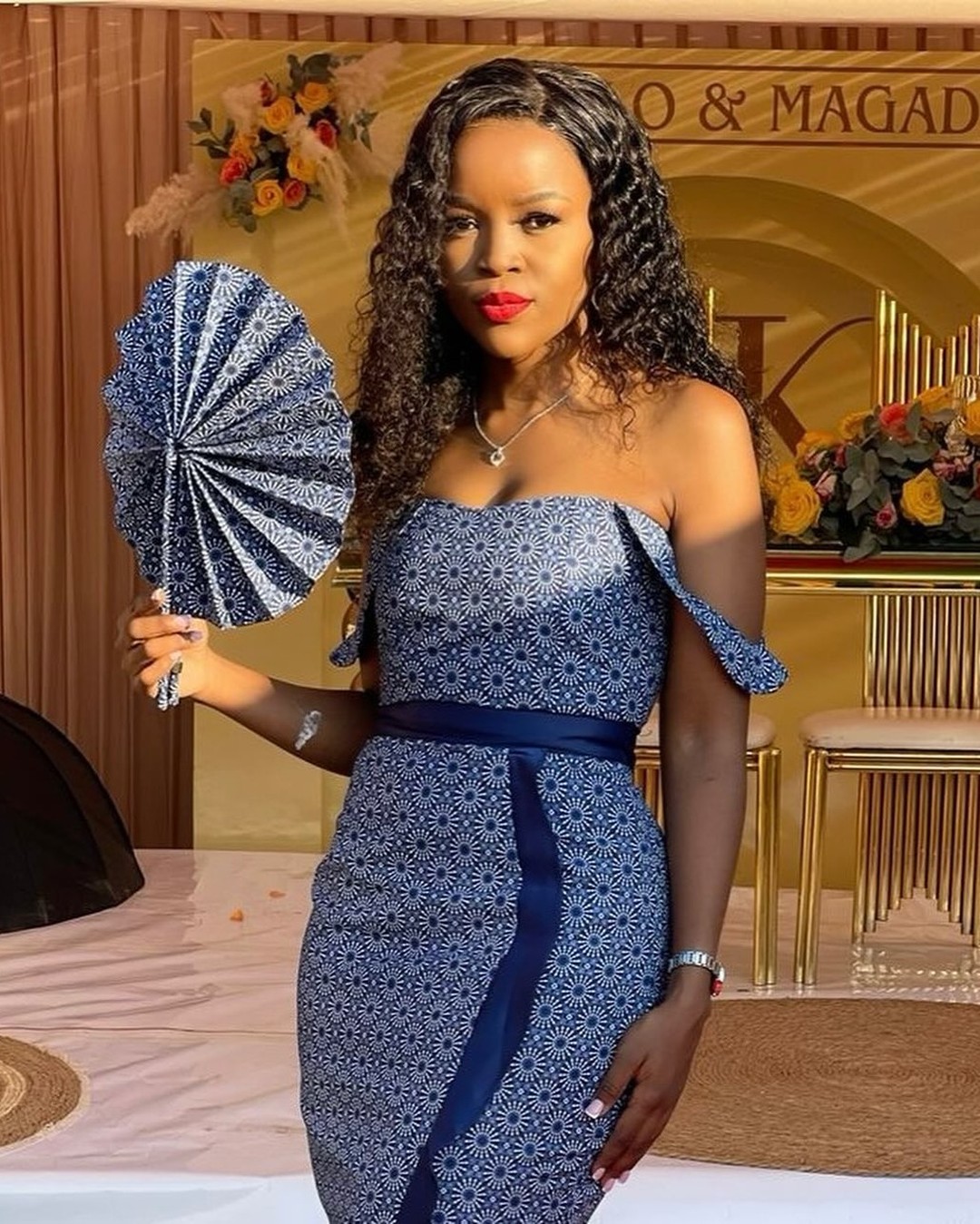
Incorporation of Western Fashion in Tswana Attire
Another modern influence on Tswana traditional attire is the incorporation of Western fashion elements. Tswana women have started pairing their traditional dresses with Western-inspired accessories such as statement jewelry, stylish handbags, and fashionable shoes. This blend of traditional and contemporary elements creates a unique and eclectic style.
For Tswana men, the fusion of Western and traditional elements is evident in the choice of footwear and accessories. Many men now opt for stylish leather shoes or sneakers to complement their tailored suits, adding a touch of modernity to their traditional attire.
In conclusion, while Tswana traditional attire holds deep cultural roots, the modern influences and trends have brought a fresh and stylish appeal to this clothing style. The incorporation of vibrant prints, tailored silhouettes, and Western-inspired accessories have made Tswana traditional attire suitable for both traditional ceremonies and everyday wear, showcasing the evolving fashion sense of the Tswana people.
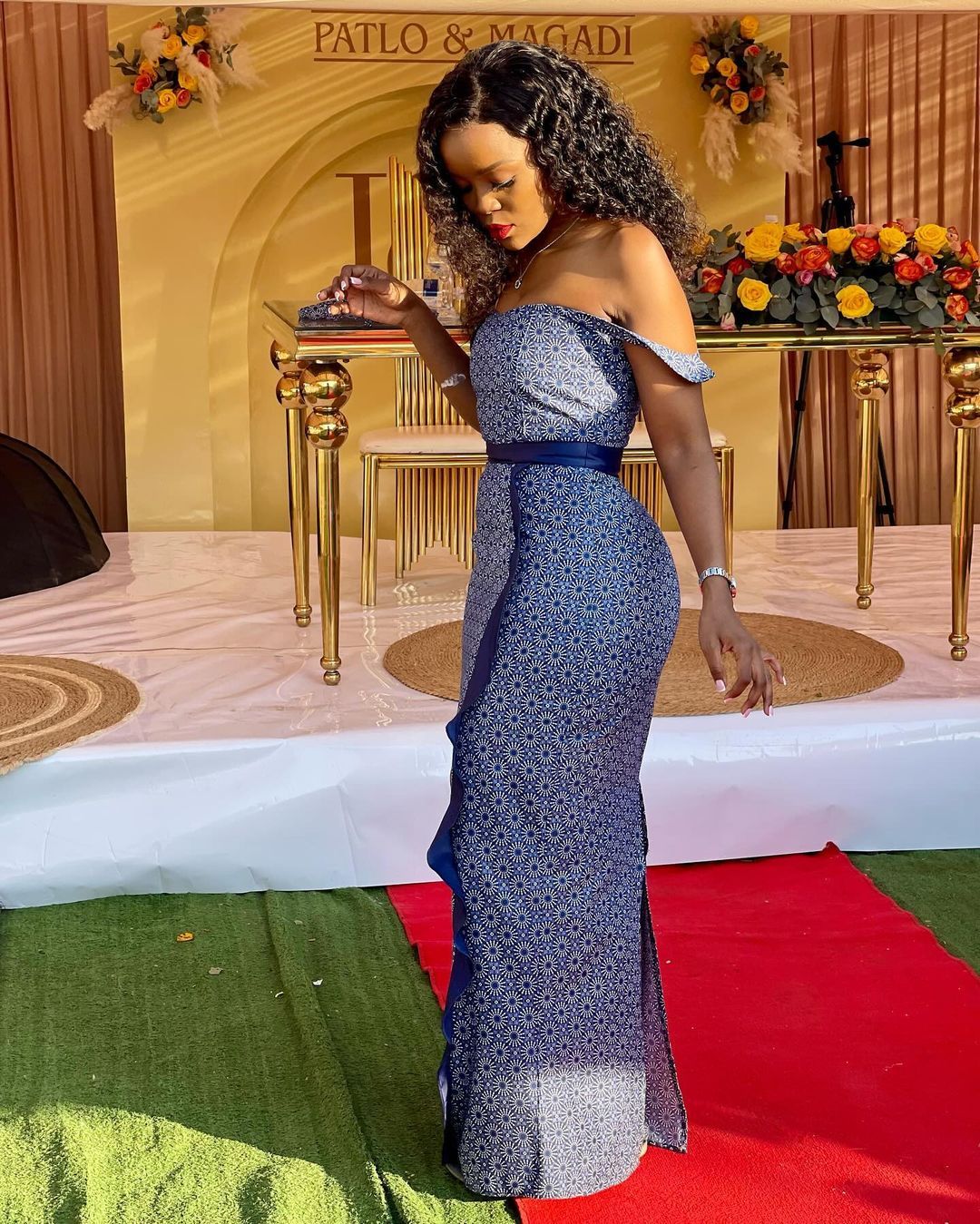
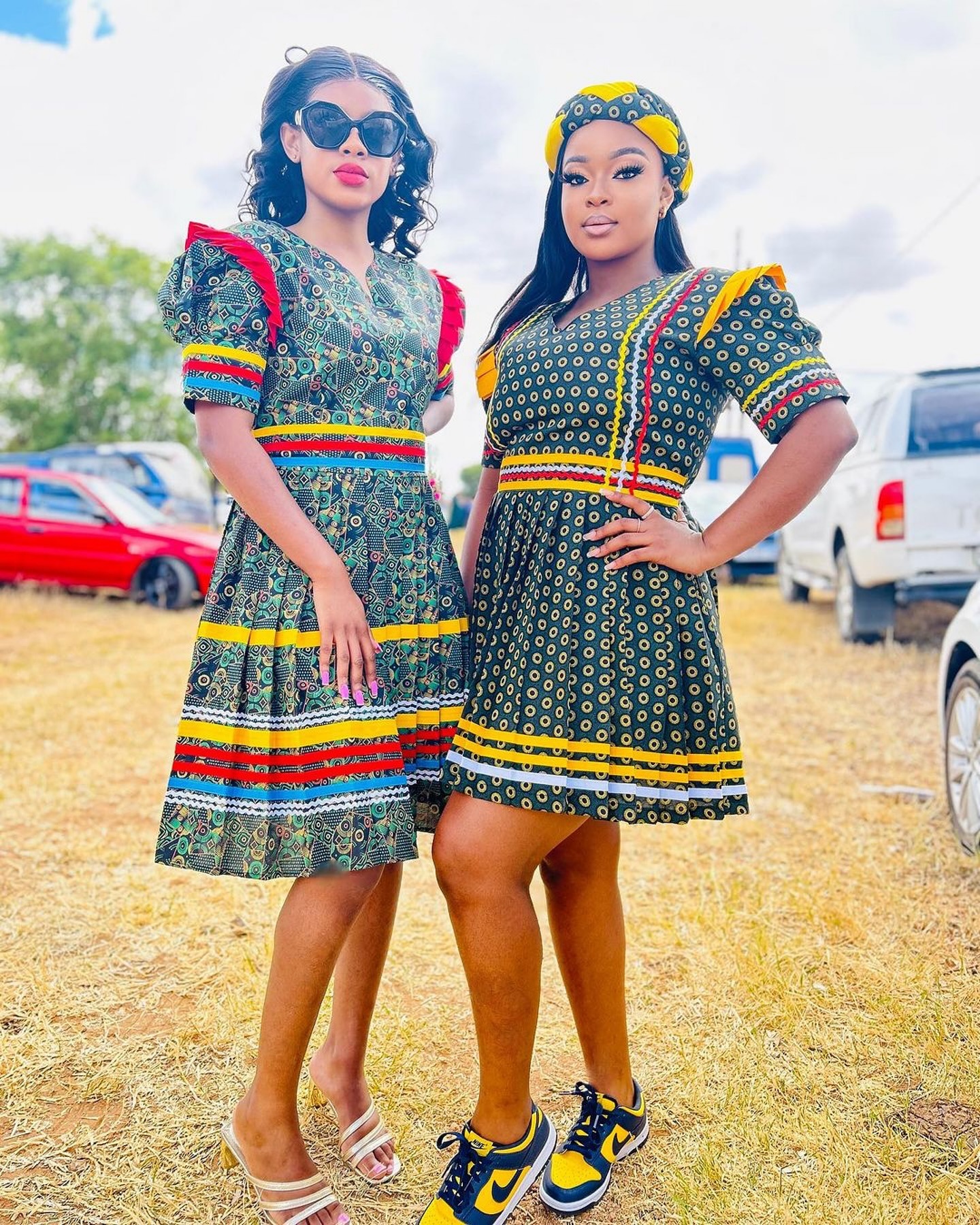
Comments are closed.